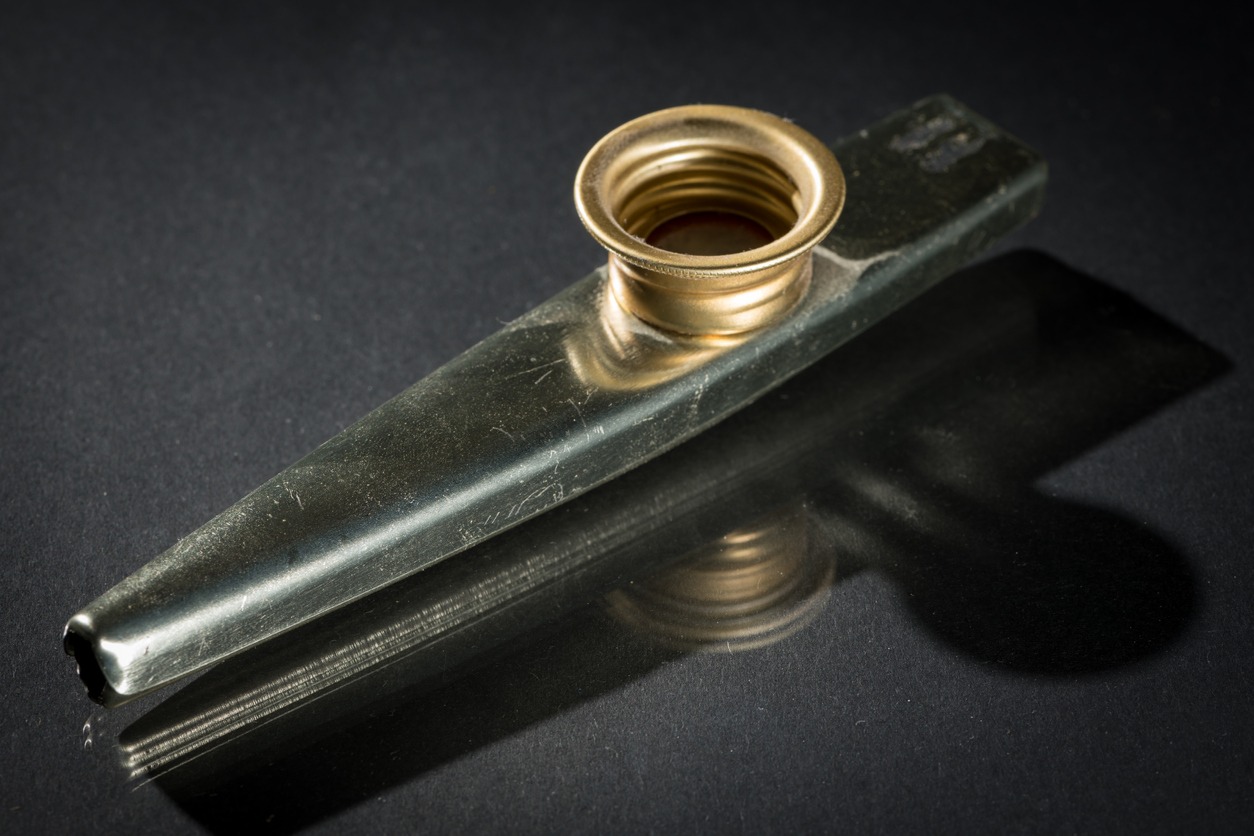Kazoo is an American tube-formed instrument, with both tube ends uncovered. It can be made of plastic or metal and has a variety of shapes. One end of the tube is flattened, and the other end has a small circular opening. Meanwhile, down on the two-thirds of the instrument, another small hole can be seen. This hole leads to a chamber wherein a wax-membrane can be found. The kazoo’s membrane is fixed around the edge by a cylinder-ring.
In playing the kazoo, the performer must induce an air current to make the membrane vibrate. This is done by singing or speaking through the instrument. One must remember that the membrane is the key point of this instrument. As well as that, the membrane gives the kazoo its distinction from the horn-section instruments. Therefore, a first-time player must understand that it’s no use to simply blow through the kazoo. Moreover, the kazoo is categorized under the types of instruments called ‘mirliton instruments.’ Mirlitons are musical instruments that produce sounds through soundwaves produced by the performer’s voice or by the instrument’s membrane.
According to history, the kazoo is a close relative of the African horn-mirliton. However, this African instrument is much more primitive in nature. It is made out of cow horns, while its membrane is made from the eggshells of the spiders. In tribe gatherings, the African mirliton was often used to distort voices. In addition to that, the first mirlitons in Europe were the eunuch flutes from the 16th to 17th centuries. In fact, Konig Ludwig von Bayern had built an enormous 2.13 meters long mirliton for the Wagner opera. In constructing this kazoo-like instrument, the king imported fat eunuchs from the Ottoman kingdom to do the job.
There were several hundreds of instruments that have a different construction but shares some similarities to the kazoo. But it was by the 18th century that many kazoos in its present form have been present in history. In the year the 1840s, a man named Alabama Vest had teamed up with Thaddeus von Glegg, a German clock manufacturer, in constructing the first kazoo. Subsequently, a traveling salesman, Emil Sorg, came across Glegg’s and Vest’s kazoo in one of his business trips. He then showed great interest in the instrument and was eager to have a mass-production of the kazoo. With this, Sorg traveled to New York and partnered with the ironsmith, Michael Mclntyre. Together, the two created the very first production of the kazoo in 1912.
In the following year, Mclntyre separated from Sogr and teamed up with Harry Richardson. The two then launched the initial mass-production of the kazooing the year 1914. During that time, selling the kazoo instrument was a good business. In fact, the sales figure for this instrument rose enormously. In 1916, Richardson and Mclntyre renamed their partnership and turned it into The Original American Kazoo Company. Amidst the pressure of competition, Mclntyre managed to get a patent for his product in 1923. Up to this day, the factory itself that Mclntyre and Richardson, still exists and produces kazoos. Next to the original factory lies the museum that tells about the history of the kazoo, as well as its detailed manufacturing process.
Due to the popularity of kazoos, it was eventually associated with different genres of music such as jazz, blues, as well as in Danish music. One of the notable jazz groups that used the kazoo was the band called The Mound City Blue Blowers, which holds the world history’s first recording with the kazoo instrument. This American novelty jazz ensemble was formed in 1923 in St. Louis, Missouri, founded by Red McKenzie. The group was composed by Red McKenzie as vocals, Dick Slevin as the kazoo player, and Jack Bland as the guitarist. Some of their song performances include the songs Arkansaw Blues, San, and I Ain’t Got Nobody. Aside from The Mound City Blue Blowers, the African-American band known as the Memphis Jug Band was also known as a group that featured the kazoo in their performances. This group consists of Will Shade, Charlie Burse, and Charlie Nickerson, among others.

